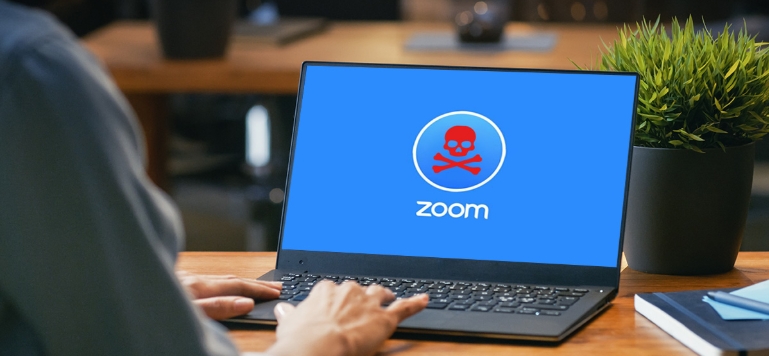
To Zoom or not to Zoom?
With COVID-19, videoconferencing has become a daily routine for most businesses. Anyone who has had to work from home lately understands and appreciates the importance of communication through videoconferencing with their clients or teams, some companies even take it a step further to host social gatherings. After this pandemic, video conferencing has become a way of life for most businesses. Zoom is easy to set up, easy to operate, and provides free access to up to 100 users at a time. But there are several downsides regarding its security. The ease of use of Zoom makes “bomb” an opening in Zoom conferences, easy for troublemakers. Information-security experts say that the protection of Zoom has had several security holes.
Zoom’s privacy policies have also been scrutinized, that until recently appeared to grant Zoom the freedom to do whatever it wanted with personal information from users, and its encryption rules, which were more than just a tad deceptive. Cyber criminals especially aim for targeting the most commonly used sites, which is why Zoom has become a popular target. This has become a greater problem as channels of communication change post-pandemic with increased use of videoconferencing. According to an April company blog post, the estimated number of free and paid regular meeting participants as of the end of December last year was about 10 million. But now the participants in the Zoom Daily Meetings have soared to over 300 million, making it the perfect target for hackers, leading to events like “Zoombombing”, where unwelcome guests interrupt a conference.
But data protection and privacy are also issues when the wrong person is granted access to a conference or meeting. But for all these reasons Zoom takes user privacy, protection and trust extremely seriously, and strongly condemns such actions as “Zoombombing”. Despite recent security and privacy issues, people are using Zoom more than ever.
So, here are some security and privacy tips on how to secure the video conferences on Zoom.
- If your Microsoft subscription comes with Microsoft Teams, use this tool instead.
- When you click on a link to enter a meeting the browser will open a new window and ask you to use or install the Zoom desktop program . But there’s a link in the fine print to “enter from your browser.” – Click that instead.
- If you are hosting a Zoom meeting, ask the participants to sign in with a password. That makes zoombombing even less possible.
- Join the Zoom meetings through your web browser instead of using the desktop software. The web browser edition gets faster security improvements.
- To register with Zoom use your work e-mail. If you’re not using a work e-mail, use a well established publically available burner account to keep your personal contact information private.
- Don’t fall for fake Zoom apps always use Zoom’s official website.
- Do not use social media to exchange links to conferences as the trolls are getting information on future social media events. So, stop posting links to meetings with Zoom publicly.
Zoom has recently updated many features that will help the users to secure their meetings more conveniently. They’ve also added a security toolbar icon to make modification of security settings simpler and easier.
